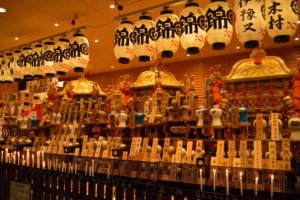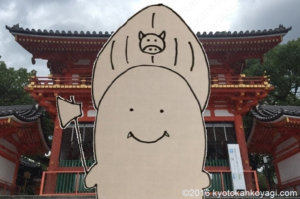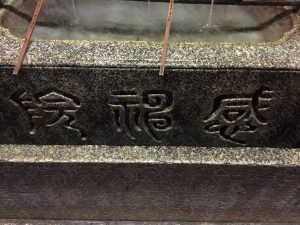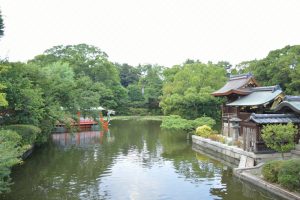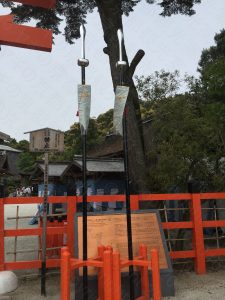THE GIST OF THIS ARTICLE
- Page 1 Introduction, Why Gion Matsuri celebrated?, Must sees 1: General
- Page 2 Must-sees 2: Shiji (rituals), Must-sees 3: De facot Shinji, Must-sees4: Kami Nigiwai
- Page 3 Breaking 2024, Schedule of 2024 (Yamahoko Parade, Hokotate, Kaisho, How to get to Gion Matsuri?
- Page 4 Gion Matsuri schedule 1
- Page 5 Gion Matsuri schedule 2
- Page 6 Gion Matsuri schedule 3
- Page 7 Mikoshis
- Page 8 Saki Matsuri Yamahoko floats 1: Naginata Hoko, Kanko Hoko, Kikusui Hoko, Tuski Hoko, Niwatori Hoko, Hoka Hoko
- Page 9 Saki Matsuri Yamahoko floats 2: Iwato Yama , Hune Hoko , Yamabushi Yama, Moso Yama, Taishi Yama, Kakkyo Yama, Hosho Yama
- Page 10 Saki Matsuri Yamahoko floats 3: Abura Tenjin Yama, Shijo Kasa Hoko, Toro Yama, Hakuga Yama ,Tokusa Yama, Arare Tenjin Yama
- Page 11 Saki Matsuri Yamahoko floats 4: Hakurakuten Yama, Ashikari Yama, Urade Yama, Ayagasa Hoko
- Page 12 Ato Matsuri Yamahoko floats 1: Kita Kannon Yama, Minami Kannon Yama, Hashi Benkei Yama, En no Gyojya Yama , Koi Yama, Hachiman Yama
- Page 13 Ato Matsuri Yamahoko floats 2: Suzuka Yama, Kuronushi Yama, Jyomo Yama, Ohune Hoko, Taka Yama
- Page 14 Breaking 2023
- Page 15 Braking 2022, 2021, 2020, Bibliography
The following is the contents of this article.
Introduction
Gion Matsuri is an annual ritual of Yasaka shrine and is one of so-called Japan three great festivals.
At first, it started as Gory-e, the Buddhist ritual in 869 on the order of the Imperial court. After the Imperial court were on decline and couldn’t afford it, the citizens of Kyoto took over it as de facto successors. Thanks to them, it survived over centuries and marked the 1150th anniversary in Reiwa 1(2019).
Though the Matsuri began as a Buddhist ceremony, it has carried on under the religious syncretism of Shinto, Buddhism and Onmyodo. In 1862, the Meiji government banned the syncretism “in terms of law” but it is still alive in 2023.
Gion Matsuri is famous for its Yamahoko prade all over the world but the most important ceremony is Mikoshi Togyo. In Mikoshi Togyo, the deities of Yaska shrine are on Mikoshis to stay Otabisho, the temporary shrine located in the downtown of Kyoto. They stayed there for a week to get rid of Ekijins, the spirit bring us epidemics.
To do away with epidemics, it is the authentic aim of Gion Matsuri since 869. In ancient times, people believed Goryos from the other world caused epidemics and they held Goryo-e to drive out the Goryos, the soul of deceased persons who was politically ousted. As time went by, people started to believe that the cause of epicemics is Ekijin and they expected Ekijins to protect them from epidemics.

In old times, people believed epidemics came from far out places. And They thought Ekijin brought them epidemics.
Today, we believe that Yamahokos capture the Ekijins in the city and the deities in Otabisho to get rid of them.
Why is “Gion matsuri” festival celebrated ?
A short history of Yasaka shrine
The foundation of Yasaka shrine remains to be secret because of its long history. At least in the 9th century, the shrine was known as Gion-kanjinin (祇園感神院), or Gion-sha (祇園社), the Buddhist temple. This sounds very strange because Yasaka shrine is a Shinto shrine today. Why was a Shinto shrine a Buddhist temple?
In ancient Japan, both Shinto and Buddhism were fused. Shinto is a religion indigenous to Japan. It is a kind of animism and a code for a small community. On the other hand, Buddhism was a religion brought to Japan from ancient India in 6th century. When our ancestors saw the introduction of Buddhism, they did not fall away Shinto. They fused both of these religions and reconstructed them as a new belief instead. That is one of the typical and characteristic way of thinking Japanese people take. If we find something interesting and it is no harm to the members of society, we just adopt it.
Now go back to the word “Gion (祇園)”. As a Budhhist temple, former Yasaka shrine enshrined Gozu-tenno (牛頭天王) as a Buddhist Deity. Gozu-tenno was a guardian of Gion-shoja ( 祇園精舎、Jatavana). So former Yasaka shrine was called Gion-kanshinin, or Gion-sha. Take a look at the picture above. It is a photo of small reservoir where visitors purify themselves. You can see engraved Kanji letters. They read Kanjinin (感神院).
This is a short history of Yasaka shrine. Now make it clear that why Yasaka shrine holds Gion matsuri festival in the following chapter.
The beginning of Gion matsuri festival
The history of Gion matsturi festival dates back to 869. At that time in Kyoto, many people suffered smallpox, dysentery, and other epidemics because of hot and damp whether and ill-prepared water supply. At the same time, whole Japan saw natural disasters like earthquake and tsunami and suffered huge expansion of maladies.
As described before, ancient people thought ousted persons of Goryo causes epidemics and natural disasters. The imperial court gave Urabeno-Hiramaro (卜部日良麻呂), the priest of Gion-sya, an order to hold Goryo-e, the ritual to calm down Goryos at Shinsen-en (神泉苑), the largest pond in ancient Kyoto. (The picture above.).
He put the spirit of the deities of the temple into three portable shrines and sent them from Gion-sya to Shinsen-en and placed 66 hokos (矛) there (We don’t have exact idea of their appearance but I suppose they looked like these hokos in the picutre above). His aim was to put the evil spirits together and have them descended to the hokos and ask the deities to get rid of them.
This ritual is called Gion-goryo-e, the origin of Gion matsuri festival. In the begging, the Goryo-e was held when epidemics expanded, and became annual event in 970. Since then, the festival was carried on for 1000 years despite of some interruption.
Gion matsuri festival today
As indicated before, Shinto and Buddhism was fused and Shinto shrines and Buddhist temple were confused. In 1868, the Meiji government gave an order to shrines and temples. They were forced to make decision to be a Shinto shrine or Buddhist temple in terms of law. Gion-kanshinin choose to be a Shinto shrine. It became Yasaka shrine and Gion-Goryo-e was renamed as Gion matsuri.
The fact that the Buddhist temple became a Shinto shrine does not mean a reincarnation of the Gion matsuri. Many documents prove that Gion-kanshinin worked and was considered as Buddhist temple and Shinto shrine: it held Buddhist ritual and that of Shinto.
That is a reason why the principle of Gion matsuri festival still remains the same though 1000 years of its history. People bring Deities on the portable shrines and ask them to get rid of evil spirits which gathered by Yamahoko floats.

Want to know much more? Check them out, old sport!
- Why celebrated?
- Why Gion matsuri started in the private garden of emperors? (It is a post of the rock garden of Ryoanji and shows you the meaning of Japanese garden.)
- Gozu tenno and epidemics
- Mikoshis of Gion Matsuri
- When Yamahoko parade started?
- How to make Yamahoko floats?
- All the Yamahoko floats
- Sakimatsuri Yoiyama
- Atomatsuri Yoiyama
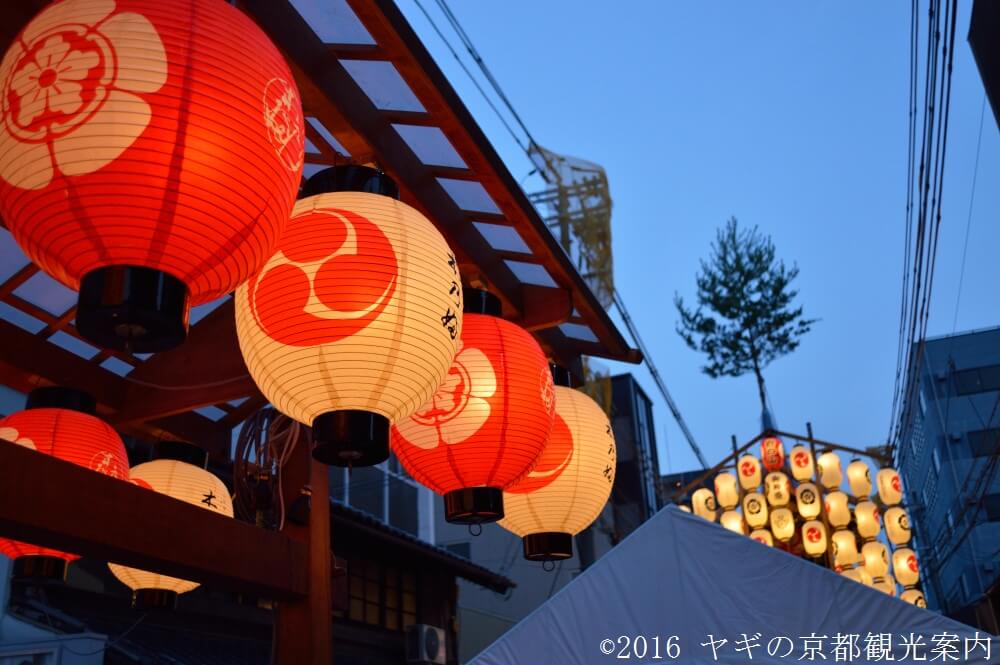
Attention: The schedule of Gion Matsuri might change. Check out the website of Yasaka Shrine.
Must-sees 1: General 総論
Syncretism of Shinto, Buddhism, and Onmyodo 神道、仏教、陰陽道、道教の混淆
Gion Matsuri is a Matsuri of Yaska shrine. The shrine used to be a Buddhist temple under the syncretism of Shinto, Buddhism, Onmyodo. The syncretism is called Shinbutsu Shugo and used to be found anywhere in Japan.

Shinbutsu Shugo means synctetism, co-existance, and fusion of Shinto and Buddhism but usually Onmyodo or Taoism are also fused with them.
In 1868, Meiji government asked Shinto shrines and Buddhist temples to separate these fused religions. Gion-sha made a decision to be a Shinto shrine called Yasaka shrine but the bond among the Shinto, Buddhism, and Onmyoto is still alive in Gion Matsuri.

The aim of Gion Matsuri is to get rid of epidemics. Yaska shrine enshrined Susanoho no Mikoto, the Shinto deity but we can find no particular reason why he has such an ability. He was considered to be a Gozu Tenno, the Onmyodo detiy. And with the story of Gozu Tenno,
he is able to put down epidemics.
Nigimitama and Aramitama 和魂と荒魂の和合
There are four kinds of Mitama(御霊), the spirit in a Japanese deity; Nigimitama, Aramitama, Sakimitama, and Kushimitama.
- Nigimitama 和魂=Tender spirit
- Aramitama 荒魂=Fierce spirit
- Sakimitama 幸魂=Sprit bring us benefits
- Kushimitama 奇魂=Sprit bring us benefit weird things
In Matsuri in Japan, Nigimitama and Aramitama of a deity are often put together for the purpose of making the deity reincarnated. In Gion Matsuri, the Nigimitama of Susanoh no Mikoto meets the Aramitama of him (Kuze Komagata Chigo) and the reincarnation is completed.

Mikage Matsuri plays the same role in Aoi Matsuri.
Shaking Mikoshis 神輿を振る
People shake Mikoshis to make the Mitamas of the deities come alive.
Yamahoko floats play impotant role 神賑神事たる山鉾巡行の神事への近接
Matsuri consists of Shinji (神事 ritual/ceremony held by Shrine or act for deity) and Kaminigiwai (神賑 ceremony held by secular people or act the secure people ).

For example, in Gion Matsuri, the priests bring the Mitamas of the deities into the Mikoshis. It its a Shinji. Without the priests or the deities, it couldn’t be carried on. Of course there are lots of people around Mikoshis to give the deities prayers but without them, the priests can complete the duty. For this Shinji, the people are kind of bystanders.
On the other hand, at Yoiyama, there are food stands. They belong to Gion matsuri and the secular prepares for food stands and the secular buy foods. It’s a Kaminigiwai.
Kaminigiwai makes a contribution especially for the seculars.
Yamahoko parade could be originally a Kaminigiwai but it grew up to be a de facto Shinji ‘cause it plays the important role: To gather Eikjins to be done away with by the deities brought by the priests.


